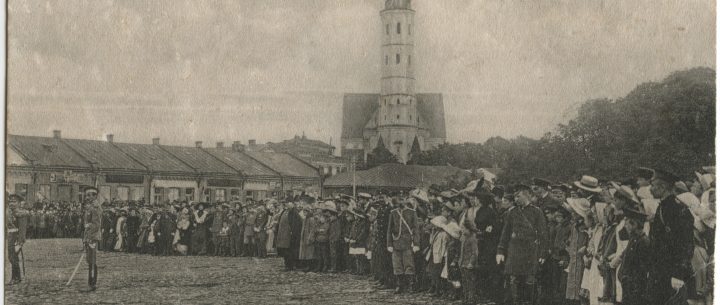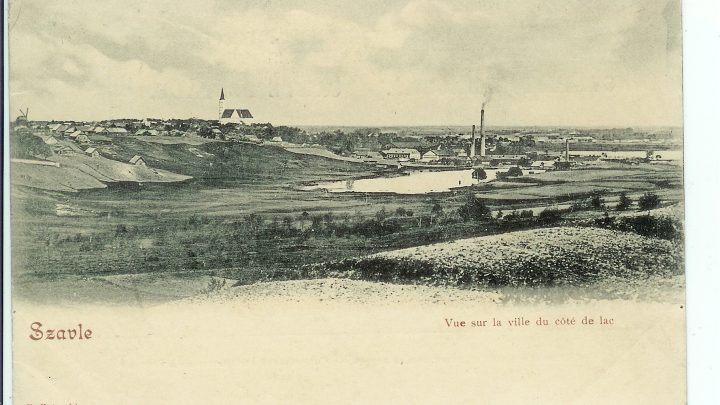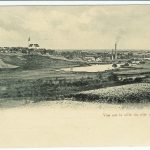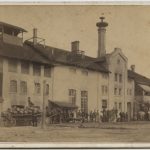Development of the City’s Industry
The economic and industrial potential of the city was promoted by emerging local enterprises. Šiauliai of the early 19th century can be called an agrarian and commercial city, where the majority of the population was engaged in agriculture, even though it did not have its own land. The situation began to change in the middle of the century, when Jewish population, who did not engage in agriculture, but were engaged in trade, began to grow rapidly in the city. As agriculture was prospering, the food industry had the most favourable development conditions. Breweries and vodka distilleries were the most successful industries, like in other cities of Lithuanian provinces at that time, but soon this business encountered a serious problem: the authorities imposed huge excise taxes on drinks produced in the city, while this was not applicable to the production produced in manors, since no tax was imposed on it. In 1875, when large-scale industry started developing, Šiauliai city crafts and small-scale industry were in the penultimate position among the regional centres of Kaunas province, but in the beginning of the 20th century, as the number of craftsmen was steadily increasing, the city became the centre of the small-scale industry and was the first in the province after Kaunas.
At the turn of the 19th-20th centuries, the large-scale industry starts functioning at its full capacity, far from lagging behind other cities of the region or province. Its emergence might have been facilitated by land-based trade routes and import restrictions introduced by the authorities of the central Russian Empire. Here, several branches of industry that were set up should be pointed out. First, it was processing industry of raw materials from livestock, which was weak until the end of the 19th century, but later grew so much that in the area of leather processing Šiauliai immediately followed Vilnius. Leather processing was initiated by one of the most successful Lithuanian businessmen ever Ch. Frenkelis, who in 1879, founded a leather processing enterprise in Šiauliai. Originally, it consisted of two small wooden houses, which eventually turned into a huge complex of brick buildings. Due to the innovations he introduced, the production of leather processing began modernising substantially and his products were soon noticed and appreciated not only in the provinces in Lithuania and Russian Empire but also in the Western market. In 1905, in world exhibitions held in Paris and Brussels, leather processed in Ch. Frenkelis’s factory was acknowledged as the best and received the highest ratings. Following such astonishing success of the entrepreneur, other business people who lived in the city and who came to the city started following his example and set up their businesses. The factories established by brothers Rogalinai (1894) and Nurokai (1898) continuously grew and increased the employees’ number. Ch. Frenkelis’s factory soon became the largest tannery in the entire Russian Empire: from 1905 to 1914, the turnover of the enterprise grew more than twice – from 7 to 15 million roubles. The factory became known for its red shoe soles, which were especially liked and appreciated. There were soap manufacturing enterprises, which slightly lagged behind these tanneries.
Food industry enterprises began setting up, the largest of which were J. Podliašukas’s tobacco factory, established in 1879 (its successful operation was stopped by the growing excise duties and a fire in 1892, after which the enterprise was no longer able to compete on the market); brothers’ Kaganai sweet and chocolate factory (founded in 1892), which in 1912 employed 250 workers; the first Lithuanian sweets workshop ‘Birutė’, owned by V. Vaitkus, which started operating in 1913.
Paper and polygraph industry also developed in the city, although not so intensively, but especially after the revolution in Russia in 1905-1907. Mostly printing houses prevailed. In 1882, the printing house of J. Volberg and F. Leivand was founded (later rebought by B. Šapiro); in 1896, J. Fridman’s printing house. There were also smaller representatives of wood and metal processing industries.
The most serious competitors of these branches of industry were industries of Aleksandrija and Gubernija manors, which belonged to counts Zubovai. An entire industrial suburb was set up in Gubernija. The brewery of the manor prospered, excise taxes were not applied to it. The brewery became one of the best breweries in the Russian Empire.
In the 19th century small-scale enterprises were not very successful; they were very few and even these would quickly close up; for example, silk and wool products manufactory founded by the local merchant M. H. Nurokas together with Austrian T. Kiunel in 1858, survived hardly a year, but at the end of the century, Šiauliai became the centre for distribution of manufactured products with prospering N. Zubovas’s shopping house ‘Progresas’, M. Iserlijus’s and J. Podliašukas’s tobacco shop and other shops.











Leave feedback